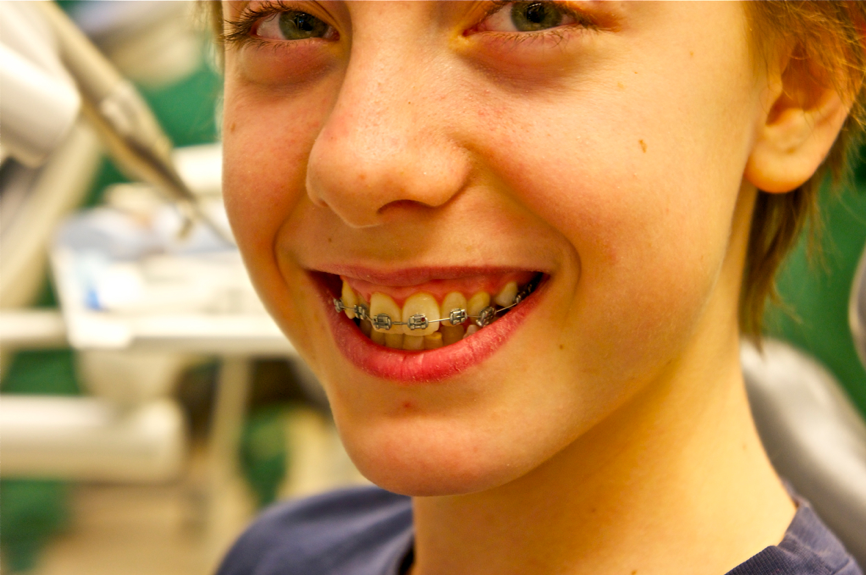How Cumming Orthodontics Addresses Common Braces and Invisalign Concerns
Comprehensive Overview to Orthodontics Procedures for Remedying Dental Misalignments
Recognizing the intricacies of each procedure, including their devices, benefits, and potential downsides, is crucial in making notified choices regarding one's orthodontic treatment. As we navigate through the extensive overview to orthodontic procedures for fixing dental misalignments, the intricate details of each method will unfold, dropping light on the course towards a unified and useful oral placement.
Orthodontic Procedures Introduction

Normal adjustments and tracking are critical parts of orthodontic treatment to make certain progress is on track and to make any type of essential alterations along the way. By going through orthodontic procedures, individuals can not just attain a straighter smile however likewise boost their total oral health and function.
Traditional Braces: How They Work
When thinking about orthodontic treatments for oral misalignments, conventional braces attract attention as a reliable technique for correcting teeth placing. Typical braces consist of braces, wires, and bands that collaborate to apply constant pressure on the teeth, slowly moving them right into the preferred alignment. The braces are affixed to the teeth utilizing an unique adhesive, and the cables are threaded through the braces. By adjusting the stress of the wires, orthodontists can regulate the direction and pressure related to each tooth, guiding them right into proper positioning in time.
One key element of just how conventional dental braces job is the process of bone makeover. As pressure is put on the teeth via the braces, the bone surrounding the teeth is reshaped to support the brand-new tooth positions. This improvement is essential for the long-lasting security of the corrected positioning. Patients will require normal changes at the orthodontist's office to make sure the dental braces remain to apply the right stress for reliable teeth movement.
Undetectable Aligners: Disadvantages and pros
Undetectable aligners use a convenient and discreet choice to conventional braces for fixing oral imbalances. These clear, custom-made trays are virtually invisible when worn, making them an appealing alternative for people looking for a much more aesthetically pleasing orthodontic treatment. One of the key benefits of invisible aligners is their removability, enabling simpler maintenance of oral health contrasted to traditional braces. Patients can get rid of the aligners prior to eating or brushing their teeth, lowering the risk of food obtaining stuck in the home appliance and simplifying the cleansing process.

Surgical Orthodontic Options
Surgical interventions in orthodontics existing sensible alternatives for resolving complicated dental misalignments that may not be effectively resolved with traditional orthodontic treatments. While undetectable aligners and typical dental braces can correct several orthodontic concerns, particular situations need medical intervention to accomplish ideal outcomes. Surgical orthodontic alternatives are typically recommended for serious malocclusions, significant jaw inconsistencies, and instances where the underlying bone framework requires alteration to accomplish appropriate placement.
One typical medical orthodontic procedure is orthognathic surgical procedure, which involves repositioning the jaws to deal with practical problems such as difficulty eating or speaking. This surgery is often executed in partnership with an orthodontist who assists straighten the teeth before and after the treatment. Surgical orthodontics may also involve treatments to subject influenced teeth, remove excess gum cells, you can try here or reshape the jawbone to produce a much more unified facial account.
Prior to taking into consideration surgical orthodontic alternatives, clients undergo an extensive evaluation to establish the necessity and potential advantages of such interventions. cumming aligners. While surgical treatment may appear difficult, it can significantly boost both the function and looks of the smile in situations where standard orthodontic treatments fail
Retainers and Post-Treatment Care

Failure to comply with post-treatment treatment directions can result in regression, where the teeth slowly move back in the direction of their original settings. Regular retainer wear, great oral hygiene, and routine dental check-ups are vital for keeping the results attained via orthodontic surgical procedure and guaranteeing the long-term security of the remedied dental alignment.
Conclusion
To conclude, orthodontic procedures offer various alternatives for dealing with oral misalignments. Conventional dental braces utilize metal braces and cords to shift teeth into proper positioning. Unseen aligners give a more very discreet alternative but might not appropriate for all cases. Surgical orthodontic options are offered for more extreme misalignments. Retainers are generally used post-treatment to keep the new positioning. Overall, orthodontic treatments can successfully enhance oral health and wellness and visual appearance.
As we navigate with the dentist dental care thorough guide to orthodontic procedures for dealing with oral imbalances, the complex details of each method will unravel, dropping light on the path toward a practical and harmonious dental placement. - cumming invisalign
One of the most typical orthodontic therapies is the use of braces, which consist of steel brackets and cables that apply mild stress to progressively shift teeth into the desired placement.When thinking about orthodontic therapies for oral misalignments, traditional dental braces stand out as a tried and true technique for correcting teeth positioning. In addition, undetectable aligners may not be ideal for intricate orthodontic issues that require more significant teeth movement, as they are usually suggested for moderate to moderate instances. Retainers are customized orthodontic devices made to hold teeth in their corrected settings after the conclusion of orthodontic therapy.